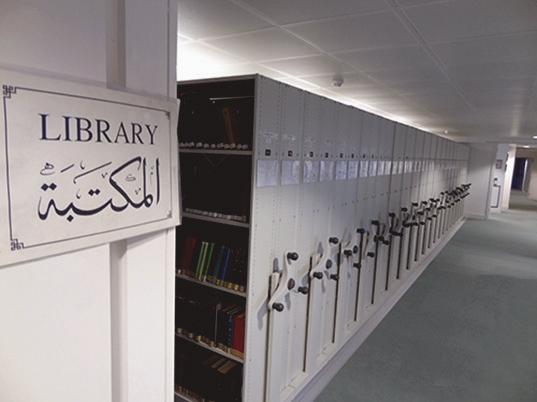
4 minute read
Recent Publications
“The Earth and it's Sciences in Islamic Manuscripts” (New Edition)
(By Various Contributors) Edited by Ibrahim Chabbouh
Advertisement
This book contains a number of papers presented during the fifth conference of the Centre for the Study of Islamic Manuscripts - Al-Furqān Foundation. The conference papers addressed the domain of mathematical sciences in relation to planet Earth, with six papers in the field of geographical heritage, accurately illustrating Earth’s representation. The papers highlight the efforts of Muslim scholars in this domain, which were treated with fairness and given due credit by orientalists; moreover, showcasing the rare gems that were published, which stand as eloquent testimony to the powers of exploration and analysis in the description of Earth and all it holds. Furthermore, the conference papers highlight the science of botany, which developed at the hands of Muslim scholars, after they had assimilated Greek heritage, and authored on it, along linguistic, horticultural, or medicinal lines of inquiry. Through their efforts, it evolved even further, to become a fully-fledged science in its own right, focused on purely scientific descriptions of flora, without engaging in agricultural benefits or advantages. While Islamic chemistry recorded no progress over more than half a century, the conference did not neglect this field. Similarly, geology, with Islamic manuscript heritage containing an extensive list of important works executed in this domain, delved into properties, benefits, colours, strength, and crystal structure, as well as markets and prices.
(By Various Contributors)

This book presents the proceedings of the 9th Conference in the domain of manuscripts organised by the Centre for the Study of Islamic Manuscripts, Al-Furqān Islamic Heritage Foundation. The academic papers presented at the conference revolved around the following topics: writing the Noble Qurʾān in the time of the Prophet, peace be upon him; the truth of ʿUthmān’s (may Allah be pleased with him) action in abrogating Qur’ān copies; Qurʾān manuscripts and their role in confirming uncommon narrations relating to orthography, pointing and diacritics; history of compilation of the Noble Qurʾān in a comparative codicological study of early Qur’ān copies; and a methodological criticism of the theory of Syriac and Aramaic texts in the Noble Qur’ān. Furthermore, the delegates discussed the topic of orientalists and the Qur’ān canonical readings with reference to Theodor Nöldeke’s book, ‘The History of the Qurʾān’, and examined the issue of the discoveries of Qurʾān parchments in Sanaa Grand Mosque. In addition, two papers scrutinised both the ‘Corpus Coranicum’ and ‘Encyclopaedia of the Qurʾān’ projects, identifying problematic issues of objectivity and bias in their presentation.
By Abbas Saleh Tashkandi

This book traces the origins of knowledge study circles (ḥalaqāt) in the Two Holy Mosques, in Makkah and Madinah, from the Prophetic times and those of the Rightly-Guided Caliphs, through the Umayyad, Abbasid, Mameluke and Ottoman eras, to the present day. It explains in detail the types and development of elementary education establishments, called kuttāb, and formal schools (madrasah) neighbouring both holy mosques, as well as how lessons specific to study circles originated in both locations. The book then addresses the institution of hostel (ribāṭ) and its role in promoting knowledge throughout the Islamic eras, whether providing the amenities of shelter, food, and medical services to scholars, jurists and students of knowledge hailing from the Muslim lands, or contributing to the activity of the educational movement; indeed, scholars who were settled in these hostels (plural: ribāṭat) would hold study circles on the disciplines of canonical readings (qirā’āt), jurisprudence (fiqh), legal theory (uṣūl al-fiqh), sciences of the Prophetic traditions (‘ulūm al-ḥadīth), Arabic language, and sciences of reason (al-‘ulūm al-‘aqliyyah). The book also addresses both the scientific board (al-hay’ah al-‘ilmiyyah) and general teaching systems in al-Masjid al-Ḥarām, as well as the most renowned courtyards (sing. ḥaṣwah) and arcades (sing. riwāq), where study circles were convened. The book concludes with biographies (tarājim) of scholars of the two holy mosques.
By Noureddine Khadmi

This book focuses on the relationship with frames of ideological, political, and legal reference, and holds considerable weight in terms of its importance vis-à-vis:
1. The application of objectives within the flow of social and political life, and in the legal, constitutional, and international reference frames. 2. The maqāṣid-based approach, in that the author avoids the traditional style of the discipline of the Islamic law objectives, in terms of presenting definitions, terminology, examples, and typical classifications, etc. Rather, the author infuses the entire study, it's facets, contents, contexts, and results, with the spirit and core of the discipline of the objectives. 3. The linking of objectives to sciences, domains, and systems, including: constitutional science and law, spheres of national life and international relations, systems of state, and constitutional, political, and international institutions.










